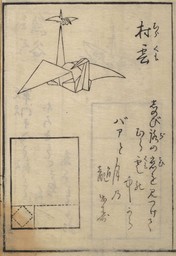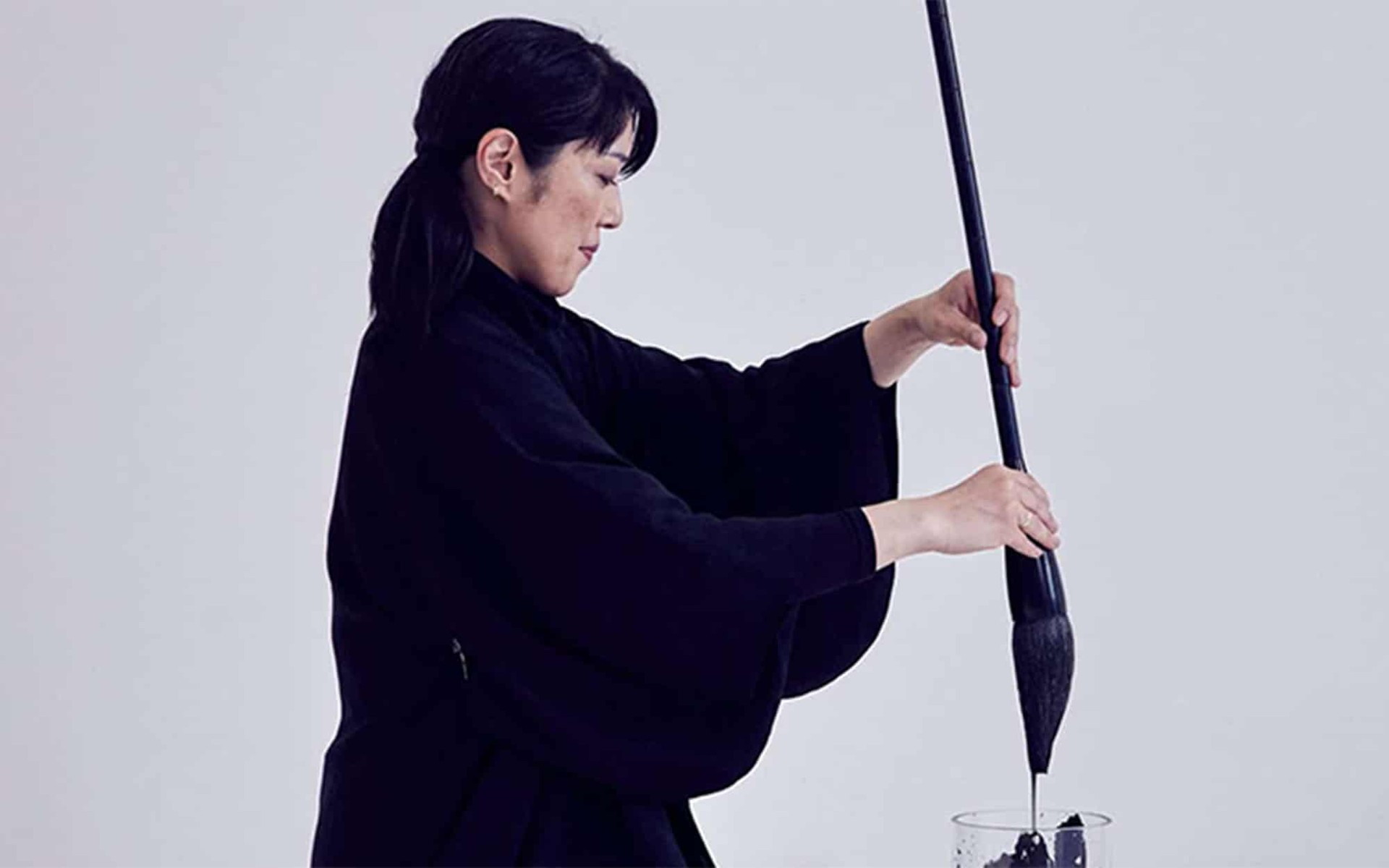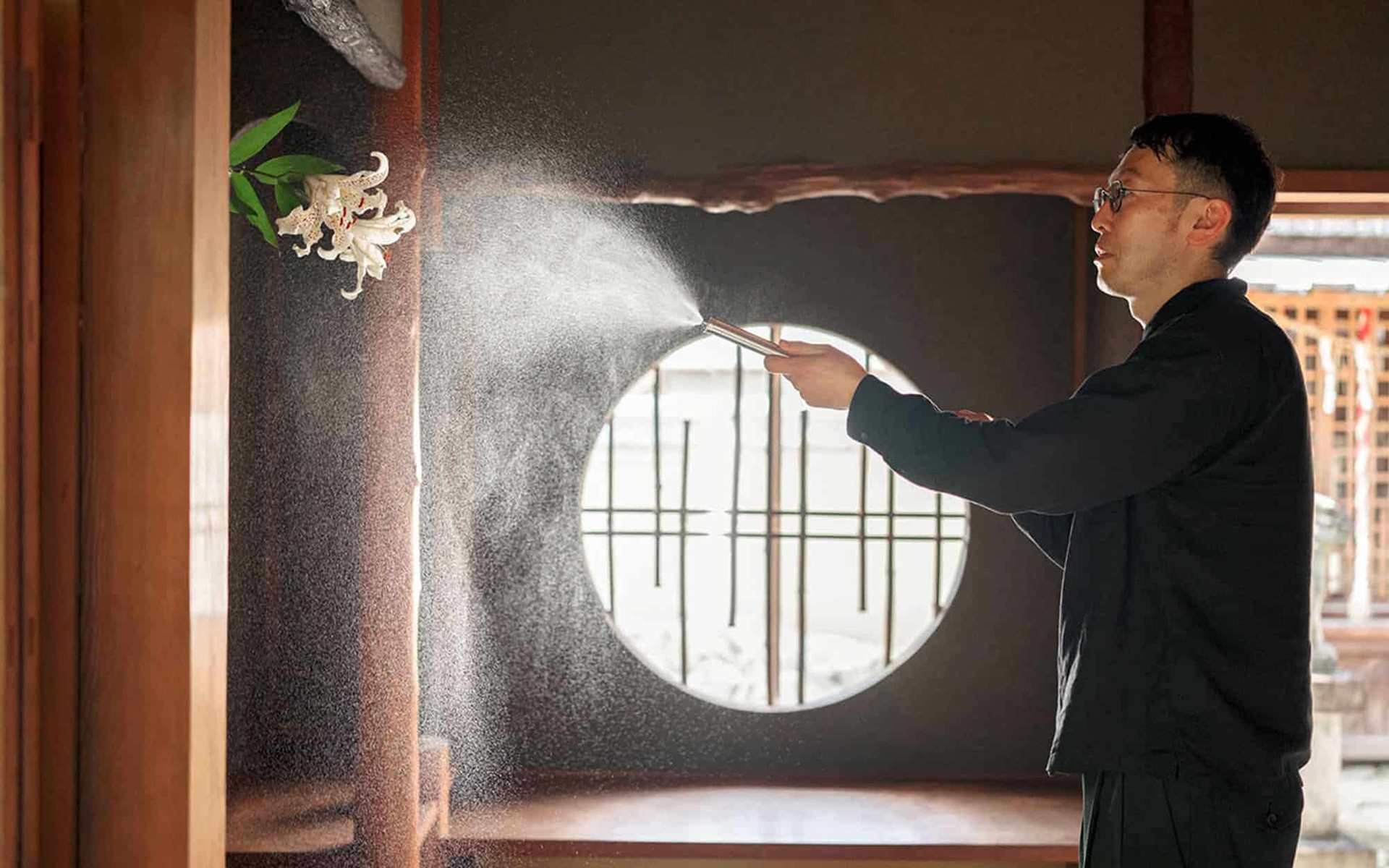INSPIRE
The Legend of the paper crane
The ancient art of origami is associated with gifts, entertainment and even math in education. The paper crane, however, is believed to have miraculous powers …
In Japan, the crane is a symbol of both longevity and fortune. Perhaps that’s why it’s one of the most popular origami creations. It’s also believed that the power of the paper crane goes beyond the simple, elegant magic of transforming a flat square into the world’s most iconic origami bird. According to one senbazuru legend (senbazuru literally means “one thousand cranes”) whoever folds one thousand paper cranes will be granted a wish.
Throughout Japan, the story of 12-year-old Sadako Sasaki perhaps best epitomizes the senbazuru legend. Having suffered radiation poisoning from the 1945 Hiroshima atomic bomb, Sadako set out to fold one thousand cranes, hoping to be granted her wish to recover. Her story resonated with the nation and paper cranes continue to be a symbol for recovery, messages of peace and hope across Japan. There’s even a building named “paper crane” in Hiroshima.

Hiroshima’s Children’s Peace Monument was unveiled on May 5, 1958 and commemorates Sadako Sasaki and the thousands of child victims of the atomic bombing of Hiroshima.
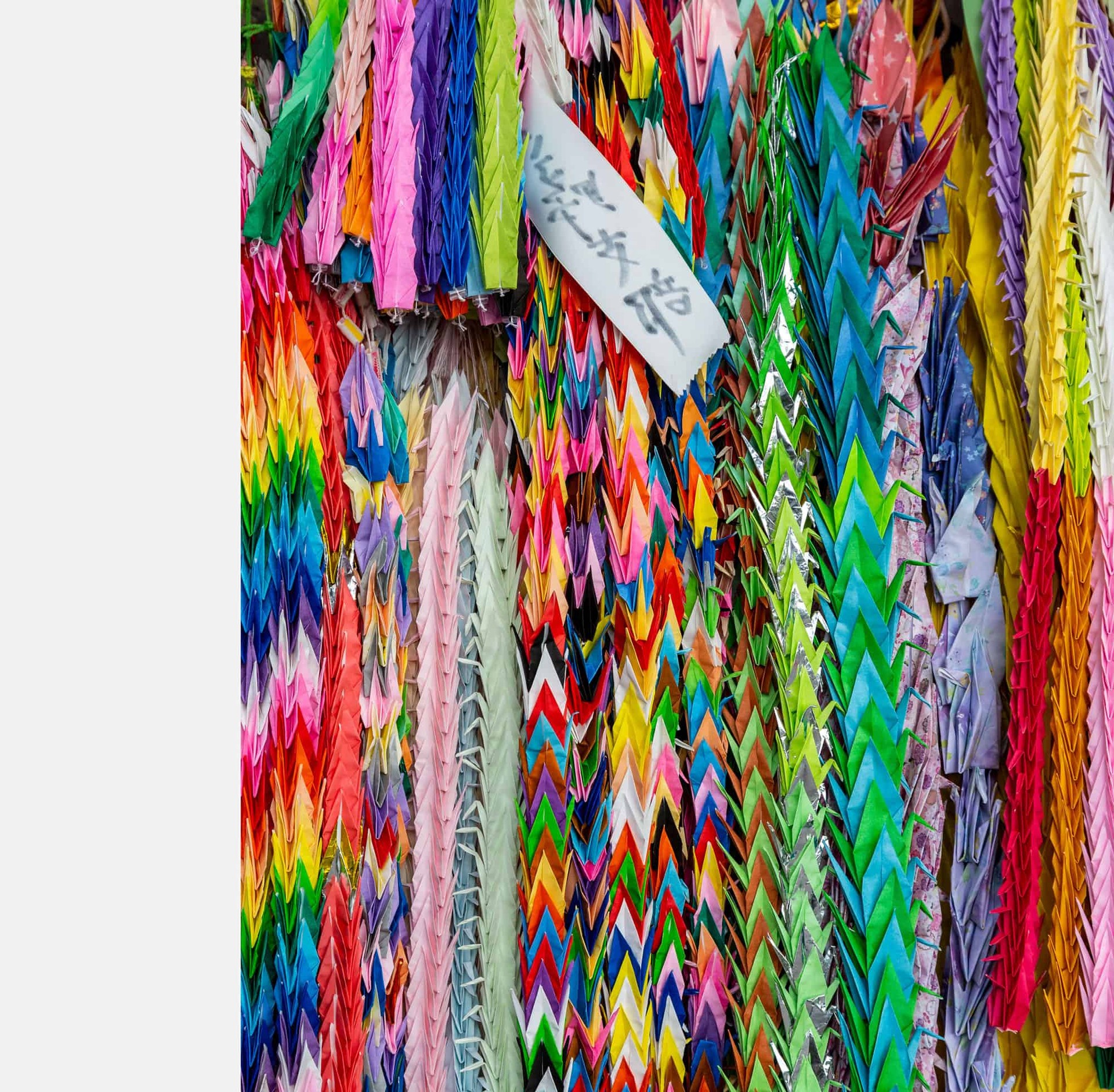
Donated senbazuru paper cranes from all over the world can be found hanging outside the Children’s Peace Monument in Hiroshima, Japan.

The bronze paper crane at the memorial, itself one of the most popular and most recognized forms of origami, was donated by Nobel Prize winner Hideki Yukawa.
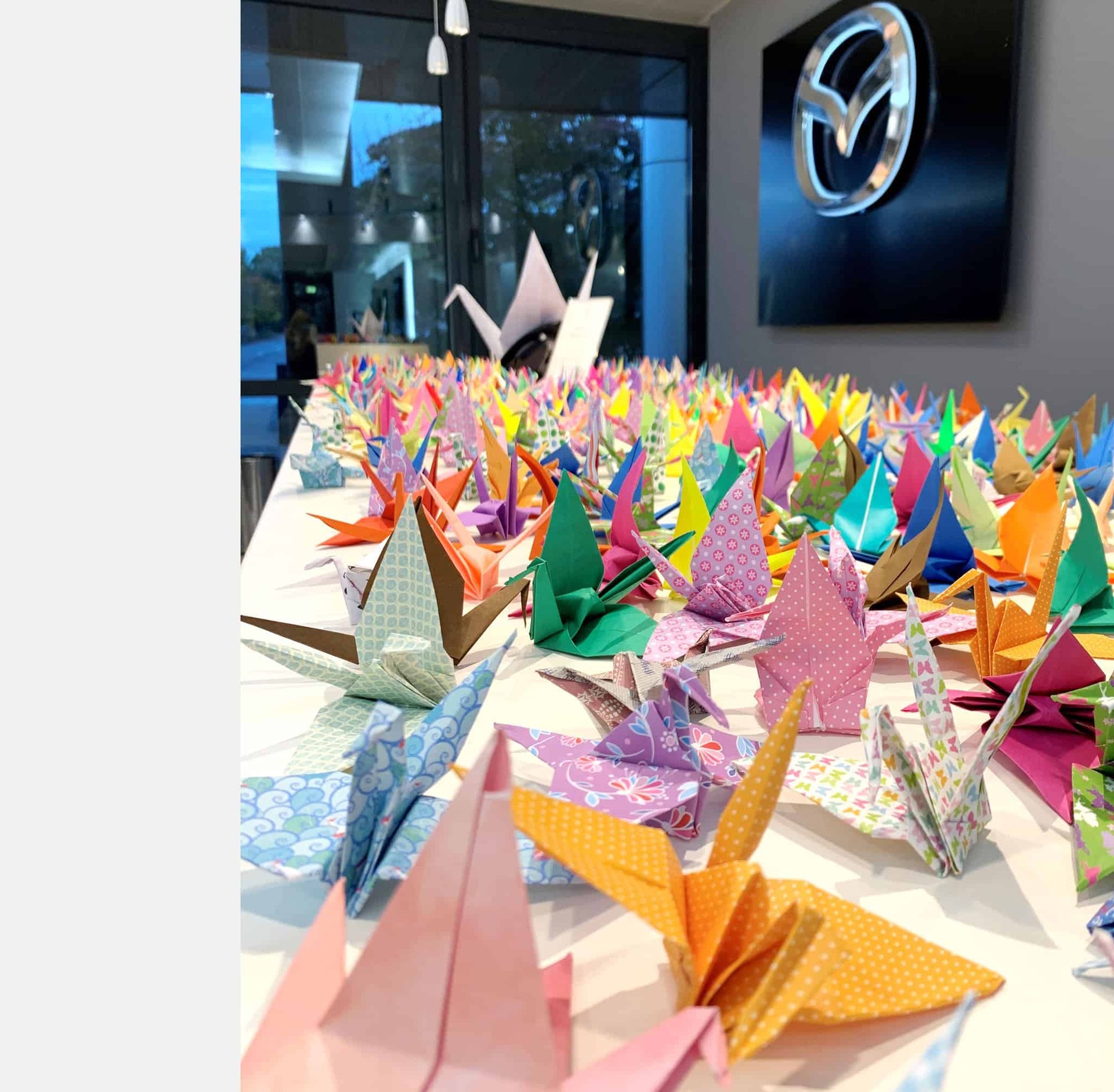
Due to travel restrictions caused by the pandemic, visitor numbers to Hiroshima have declined and, with them, the amount of paper cranes donated to the peace memorial. To help this, Mazda has been hard at work around the world with its paper crane project, where overseas distributors, employees and local communities have been donating thousands of paper cranes every year.
Florida-based artist and teacher Kuniko Yamamoto has always been surrounded by the art of paper folding. “I grew up with origami everywhere in my house—my mother made origami boxes to hold clips, my grandma wrapped eggs neatly in origami, and my uncle did bar tricks with paper napkin origami,” she says.
Yamamoto grew up in Japan. She’s been practicing paper folding professionally for two decades, but her roots in origami run much deeper—she first learned the art at the age of five. And, while crafting egg cups or tiny, tidy boxes out of paper are perhaps not a common sight around the world, paper cranes are recognized globally.
“My mother made origami boxes to hold clips, my grandma wrapped eggs neatly in origami, and my uncle did bar tricks with paper napkin origami.”
Kuniko Yamamoto
According to Toshi Aoyagi, a founding member of the Origami Society of Toronto, origami amateurs are always eager to master the ubiquitous crane—but it’s not quite suited for fresh folders. “I consider the crane a graduation piece, for the end of a beginner’s class,” explains Aoyagi. He’s taught origami to adults and children alike for many years, and points out how intimate a craft it is—learning the ins and outs of paper folding requires close, often hands-on instruction that’s individually tailored to the student. “Some say that Japanese people are just naturally good at folding, and I don’t think that’s true,” he says with a laugh.
Typically, origami is thought of as a very old art form, but both Yamamoto and Aoyagi point out that its origins are unknown. The Hiden Senbazuru Orikata (Secret to Folding One Thousand Cranes) is the first known book on origami and was published in 1797. “If that’s the oldest origami book, origami is not that ancient,” points out Aoyagi. Factors like the availability of paper and recreational time are important elements to consider when thinking about origami’s history: art takes resources and hours. Plus, of course, inspiration.
Wikimedia Commons
Aoyagi considers the paper crane one of the most perfectly crafted objects. That’s because the center of the crane—the “x” mark on the bird’s back—is the center of the piece of paper. This becomes obvious when you unfold a crane: the crease pattern extends out from the middle, almost like a snowflake. “It’s such a powerful thing to have this kind of balance in design,” he says. “The amount of paper consumed here, in four different directions, is totally equal.” It’s this balance that allows the crane to be properly hung using just a single thread through its middle.
In fact, the basic-looking crane is a technical marvel, which also makes it an effective teaching tool. Yamamoto says that through origami, “students learn math, fractions, basic geometry and the number system.” She adds that the craft can foster language arts skills, too, as children learn how to properly communicate each step. “I’m still searching for better ways to connect origami with the school curriculum for creative learning—it’s been a great journey,” she shares. The Children’s Peace Monument in Hiroshima remains covered with bright paper cranes to this day, and cranes are still folded to encourage recovery from sickness (plus as fan gifts for celebrities and athletes, Aoyagi notes), so the magic continues.
How to make your very own paper crane
There’s nothing quite as satisfying as building a paper crane from a single piece of paper. Follow our simple walkthrough and build your own paper crane at home. Repeat the whole process a thousand times, it’s said, and you will be granted a wish. Don’t forget to share your creation using #MazdaPaperCranes.
Words Alyssa Hirose

find out more
